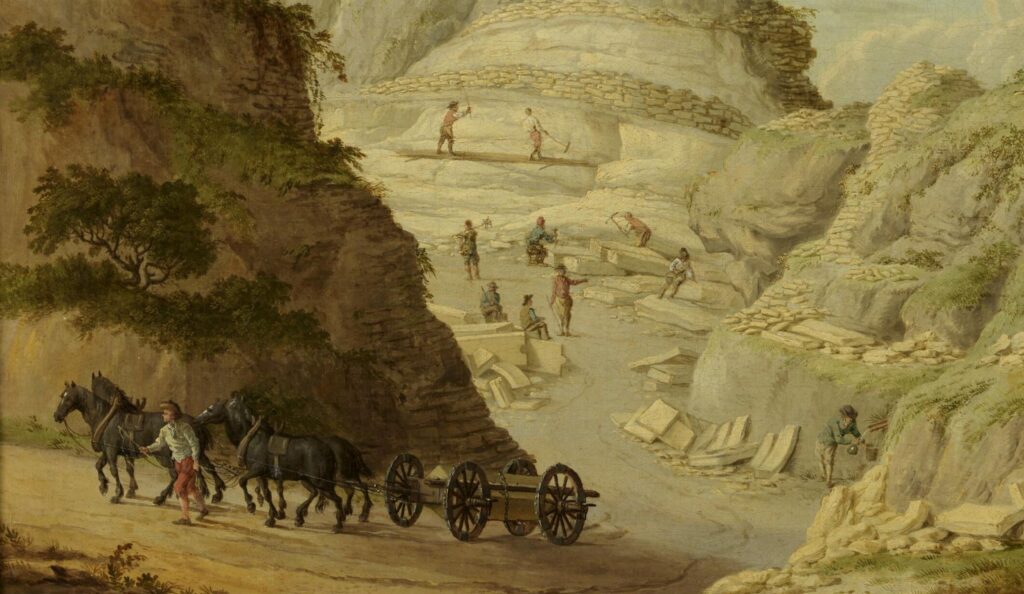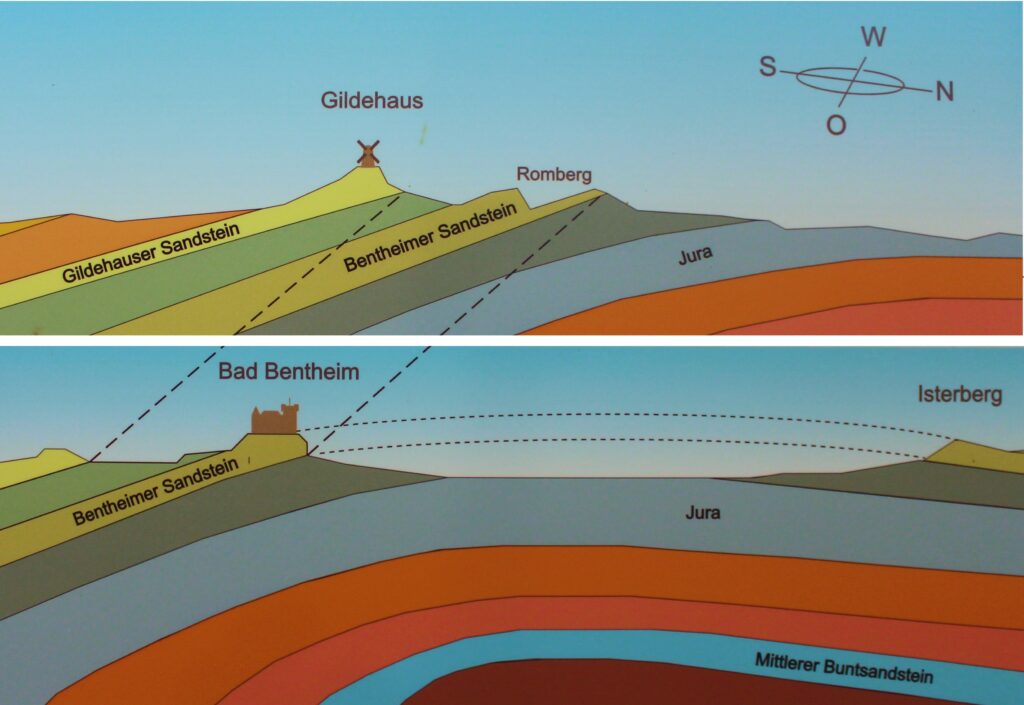Quarrying History
Sandstone was quarried in the County of Bentheim as early as the 11th century. The stone deposits in Bentheim belonged to the domain of the Counts of Bentheim and were leased out. In the 17th and 18th centuries, the income from these leases was the most important source of income for the Counts. The rent negotiated with the Counts’ rent master was probably based on volume per order. The Bentheim mines only received between two and just under four per cent of such rental income. The lion’s share came from the Gildehaus quarries, comprising a more coveted light-coloured sandstone, which is almost golden in appearance.

In the heyday of sandstone quarrying, there were up to 22 quarries in the Upper County. Many of their names recall the last tenants, such as “Schlüters Kuhle”, “Kölljans Kuhle” or the “Vosskühle”. Currently, Bentheim sandstone is only quarried in a four-hectare area in Gildehaus (type: Gildehaus). The quarry at the open-air theatre (Freilichtbühne) in Bad Bentheim is being reactivated to once again source the reddish sandstone (type: Bentheim).
The workers of the Bentheim quarries — labourers, stonecutters and stonemasons — were known as “Kuhlkerls”. These quarry workers removed the rubble and overburden and loaded the quarried stone for transport. Stonemasons then removed large slabs of sandstone from the rock and cut the natural stone to the required dimensions. They also produced simple workpieces such as wall and corridor stones. A dual-tipped point, the Blicke, was their most important tool. The roughly hewn stones were then further processed by the stonemasons, doing the fine work. Their workshop was located near the quarry, often directly in the pit. They also frequently worked on external building sites.
Work in the quarries was in high demand, as, aside from agriculture, quarrying was often the only source of income. The profession carried a high health risk, with frequent accidents. Most workers contracted silicosis (stone dust). Every third stonemason died before the age of 40.

